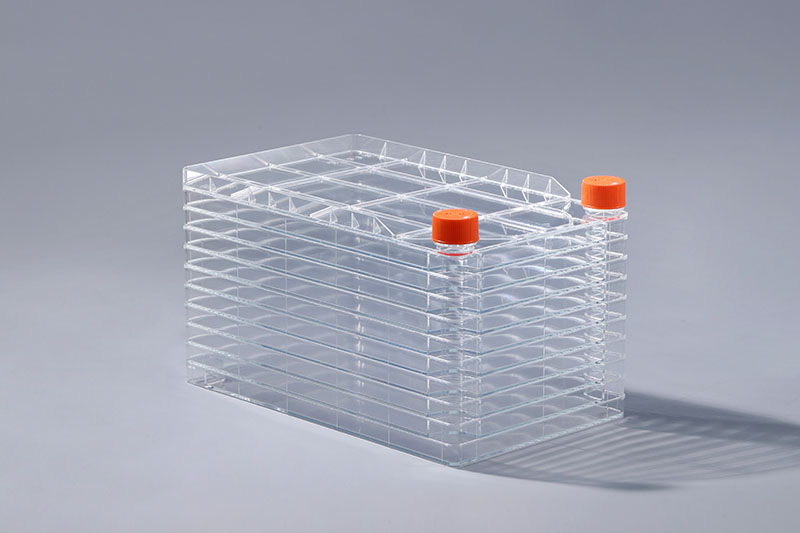Which cells can be grown using cell factories
With the in-depth development of the field of life sciences, cell culture technology is widely used in many fields such as biopharmaceuticals, industrial vaccine production, and monoclonal antibodies. According to the different ways of cell growth, it is divided into two categories: adherent cells and suspension cells. So which cells can be cultured using cell factories?
The cell factory is a multi-layer structure of cell culture consumables. Common specifications include 1 layer, 2 layers, 5 layers, 10 layers, 40 layers, etc. It is mainly used for the culture of adherent cells. The growth of adherent cells must have a support surface that can be attached, and cells can grow and reproduce on this surface by relying on the attachment factors secreted by themselves or provided in the culture medium. After the cells attach, they usually cover the culture surface within a few days and form a dense cell monolayer, such as Vero cells, HEK 293 cells, CAR-T cells, MRC5, CEF cells, porcine alveolar macrophages, myeloma cells, DF -1 cells, ST cells, PK15 cells, Marc145 cells, etc. were all adhered to the cell factory for culture.
In addition, this consumable can also be used for stationary culture of suspension cells. Suspension cells refer to cells that grow independently of the surface of the support and grow in suspension in the culture medium, such as lymphocytes.
Cell factories are generally produced from polystyrene raw materials, and the surface is hydrophobic. If it is used for adherent cell culture, the surface needs to be treated with TC to increase its hydrophilicity, which is suitable for cell adherent growth.

评论
发表评论